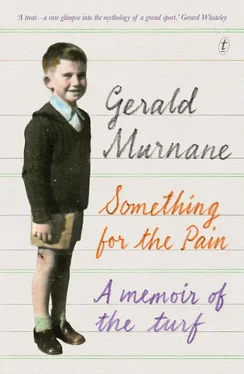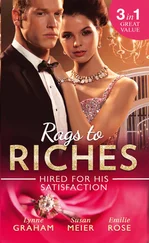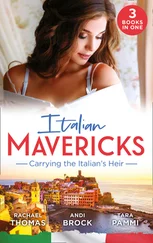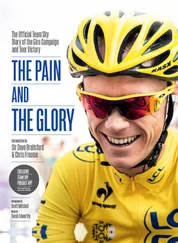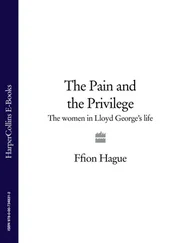I was leaning on the mounting-yard fence one day at Warrnambool during the summer meeting when I saw a man whose image comes easily to my mind today, sixty years later. I long ago forgot the man’s name; nor do I recall anything of his trainer or his jockey. His horse was named Concito, and I remember the colours it carried, although I found them unattractive. I’ve sometimes tried to persuade myself that every possible set of colours must, by definition, be distinctive and must have a certain amount of appeal, but I’ve never been able to bring myself to like a certain few combinations of colours. One of them is the combination of black, red, and light blue. Concito’s colours were Black, light-blue hoops and sleeves, red cap. At least, the preponderance of the light blue made the colours a bit more appealing than a combination of mostly black and red. The owner of Concito was the best-dressed man in the mounting yard. This was a country meeting, where some owners and trainers wore neat casual dress, as we call it nowadays, but the owner of Concito wore a suit of some expensive-looking pale material, a white shirt, a tie of mostly pale blue with touches of black and red, and a grey hat with feathers in the brim. Even more striking than his clothes was his silver hair — or what could be seen of it beneath the brim of his hat. And there was plenty to see. Most men still favoured short back and sides in the 1950s but this man, like some of the wealthy residents of Toorak who I saw at Metropolitan Golf Club when I worked there as a caddy, obviously wore his hair long, so that it was bunched above his ears and neck.
Nowadays, a trainer’s hometown or suburb is printed after his or her name in the race book, but that was not the practice in the 1950s. My only way of learning where Concito was trained, and so to learn the district where its owner might have lived, was to look at its form in the race book: to see where it had raced recently. The horse’s three most recent starts had been at Hamilton and Casterton in Victoria and at Bordertown in South Australia. Even after having learned these facts, I was still a long way from knowing where exactly Concito came from. A triangle with those three named towns as its apexes covered a large slice of countryside, but my lack of specific evidence was hardly a hindrance to me. At the next opportunity, I unfolded a map of the far west of Victoria and the far south-east of South Australia and set not only my eyes but my imagination also roaming. At that time I had been no further north-west of Warrnambool than the township of Koroit, only a short drive inland, but I was able to recall a few illustrations from the Weekly Times and the Leader . I might also have performed a sort of extrapolation, telling myself that the country further inland must have been by degrees drier than the coastal zone. I guessed that the landscapes I was assembling in my mind were no less level than those I had seen from the coastal cliffs, although any place on a map that had winding roads or the beginnings of watercourses reminded me to include a few hilly districts or plateaus in my private territory.
I called the territory the Border District and its inhabitants Borderers. I awarded to those inhabitants not only the usual amount of shrewdness and sagacity attributed to people living far from the capital cities but extra doses of cunning and acquisitiveness on account of their living close to a border. When I did this, I had in mind vague memories from my reading in history books of parties of Welshmen driving home English cattle from across the border; of wily Pyrenean peasants profiting from smuggling; of the Percy men lording it over Northumberland and southern Scotland. My Borderers did not literally smuggle or steal livestock. No, they used horse racing to achieve what the Welsh and the Pyreneans achieved by less subtle means. Their living near the edge of things made them more circumspect and painstaking than racing men from the coast or from around Melbourne or Adelaide. The long-range plans of Borderer owners and trainers more often succeeded. They more often landed their betting plunges. I would not have my Borderers thought of as wholly devoted to gain, however. They numbered among them many a man who wore his hair bunched above his ears and on his neck and who stood out on a racetrack on account of his elegant dress and proud bearing. Such a man owned a vast cattle or sheep property and lived in a mansion with a veranda on three sides and groves of deciduous trees all around. His mansion included a library and a study. The walls of the study were covered with photographs of the finishes of races won by his own horses. The walls of the library were covered, of course, with books, and while I could never dare to suppose that even one of the many mansion owners in my vast border district sat sometimes at a table in his library trying to compose a local variant of one of the renowned Border Ballads, still I like to think that many a mansion owner read sometimes from a collection of those ballads and considered them, as I do, as eloquent and memorable as any poems in our language.
No plunge was launched on Concito. The horse finished fourth or fifth, but this may have been part of some long-range plan that culminated, months later, in a successful plunge at Edenhope or Penola. I never heard of the horse again. Nor did I ever hear again of another Borderer, Sir Flash, or of his connections, who bore far more resemblance to Welsh cattle thieves or Andorran smugglers than did the silver-haired owner of Concito.
The story of Sir Flash (Green, pink cap) is simply told. The horse may even have competed at the same meeting as Concito. Certainly, the meeting was in January at Warrnambool. I was with my father, who was constantly stopping to talk to some or another old acquaintance from the district or even to a few visiting smart men from Melbourne. The talk always concluded with each man’s giving the other one or more tips for the day and, although no one from Melbourne mentioned him, most of the locals wanted to tip Sir Flash to my father. Several of them added, however, that they doubted whether the horse would actually run that day. They raised this doubt because the horse had still not arrived at the course even a couple of hours before the starting time of its race. My father and I verified this by visiting the stall allotted to Sir Flash in the so-called birdcage and finding it still empty.
Sir Flash must have arrived on course just in time, given that he took his place in the jumpers’ flat in mid-afternoon. Few jumpers’ flat races are run nowadays. They were interesting races, usually over a long distance and reserved for horses that had completed the course in a stated number of hurdle races or steeplechases within a stated time before the race. Sometimes, an astute trainer — to use an epithet much liked by racing journalists — would start a moderate flat-racer in a series of jumps races, not caring where the horse finished but only that it should complete the course and thereby become qualified for a jumpers’ flat race. Most jumping horses were plodders on the flat, and the astute trainer’s horse might have had an advantage after he had been transformed legally from a flat-racer into a jumper.
My father’s acquaintances were not the only ones who expected Sir Flash to run well. The bookmakers, too, had had their ears to the ground. A large field contested the race, but Sir Flash opened at the short odds of five to two. That was the best bet against him. There was no sudden, well-organised plunge — just a steady flow of money. My father and all his tipsters had good bets on Sir Flash. Even my father’s Melbourne friends joined in with their bets. Although there was no plunge, my father pointed out to me two men who went continually to bookmaker after bookmaker, sometimes two or three times to the same one. The men had moderate bets of twenty or forty pounds each, but their total outlay would have been considerable. My father had never set eyes on the men, and no one that he knew from around Warrnambool knew anything about them, but you know who they were, and so do I. Yes, they were Borderers.
Читать дальше
